
하버 포털 크레인: 효율적인 항만 처리를 위한 강력하고 지능적인 솔루션
A harbour portal crane is a typical slewing-jib crane with a gantry-type structure that travels along rails. It integrates lifting, slewing, luffing, and traveling functions, and is widely used in ports, docks, shipyards, and offshore engineering for heavy-duty lifting operations. Equipped with grabs or hooks as lifting devices, it performs loading and unloading tasks efficiently. Various safety systems are installed to ensure operational safety, allowing the crane to handle offshore wind turbine components, marine engineering materials, general cargo, bulk materials, and containers with high efficiency and reliability.
As a key component of modern port handling systems, the harbour portal crane combines high efficiency and stability, representing the mechanization and intelligent development of today’s port operations.
Features of Harbour Portal Crane
- Multiple structural forms of grab anti-sway devices are available, providing excellent rope stabilization and significantly reducing spreader swing.
- Dual-crane coordinated operation technology ensures high control precision and optimal synchronization.
- The raised boom hinge point enables smooth steel wire rope winding, extending service life and simplifying maintenance.
- Automatic spreader slewing-follow system for container handling improves operational efficiency and enhances safety.
- Vector frequency conversion and energy feedback technology deliver energy-saving and environmentally friendly performance.
- Automatic fault detection and real-time data display ensure high safety and reliability.
- Multiple operation modes are available — manual, semi-automatic, and remote control — providing advanced technology and stable performance.
- Equipped with intelligent core technologies such as running and slewing positioning, intelligent spreader path tracking, and automated safety protection.
- Comprehensive safety measures include high wind alarms, dynamic safety scanning, and more.
Technical Parameters of Harbour Portal Crane
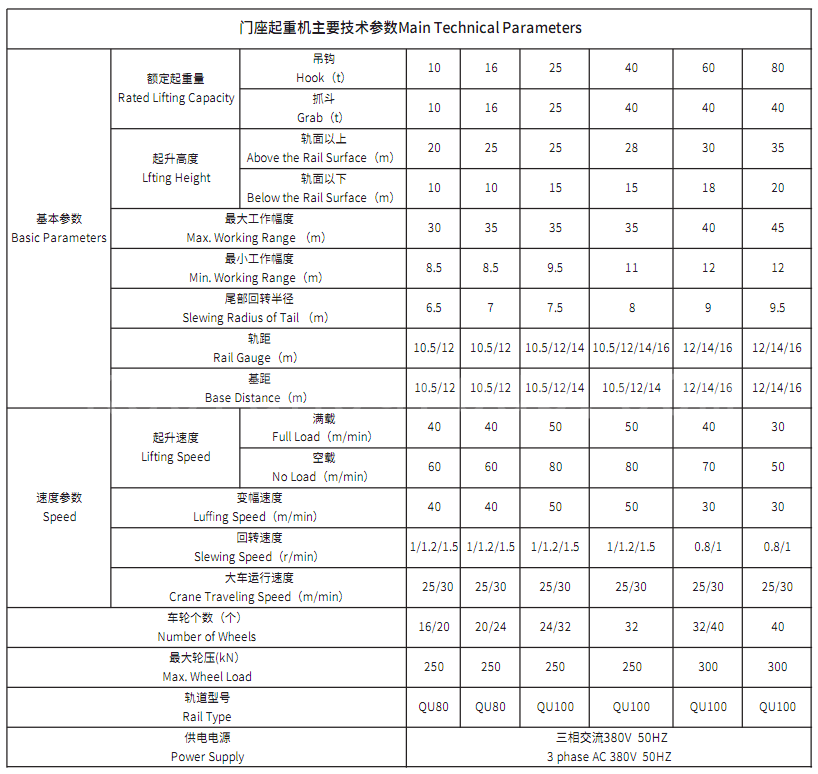
The above parameters can be customized according to port conditions, cargo types, and operation frequency to ensure the harbour portal crane fully meets diverse working requirements.
Types of Harbour Portal Cranes
Based on boom structure, harbour portal cranes are generally divided into Four-Link Portal Harbour Cranes and Single Boom Portal Harbour Cranes.
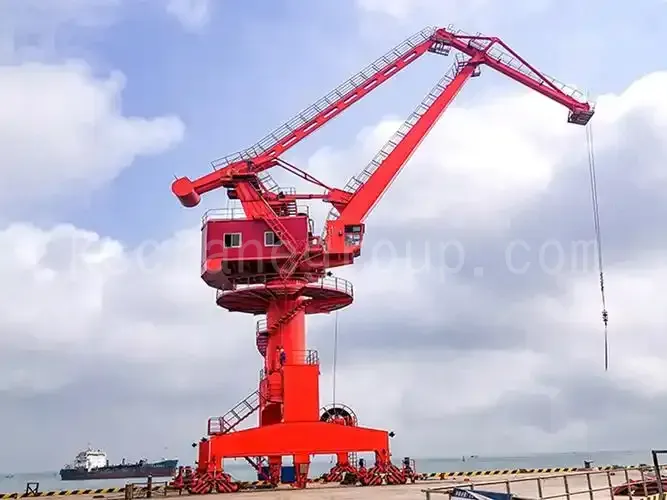
- Minimal change in spreader level during luffing
- Smooth operation
- High working speed rating
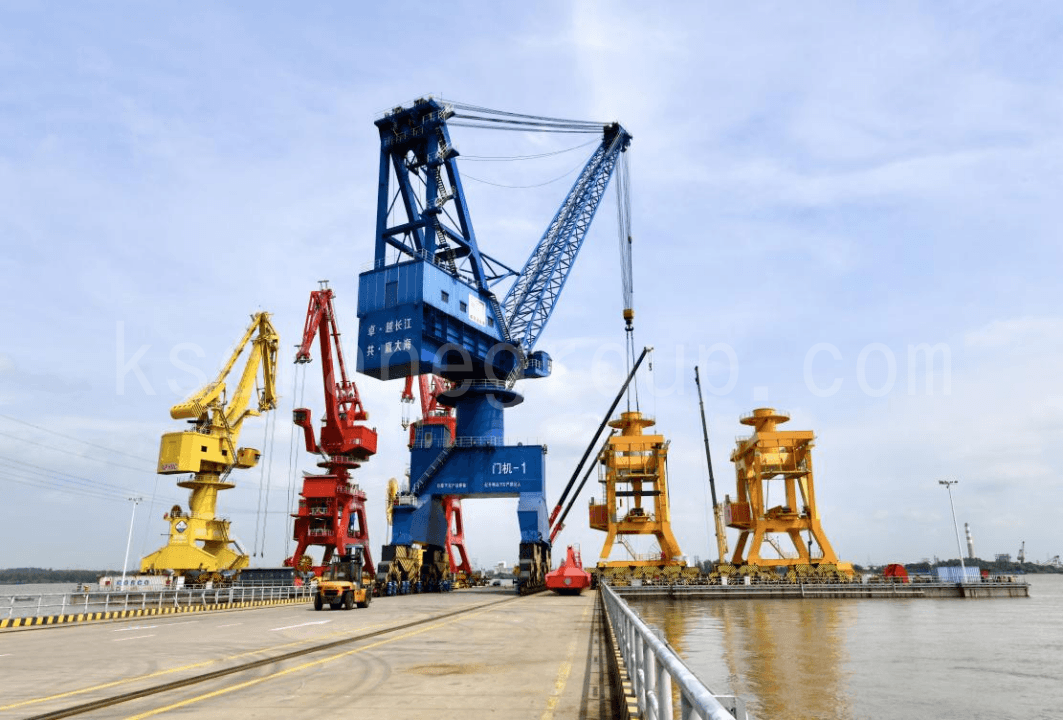
- Simple structure
- Lightweight design
- Wide luffing range
Applications of Harbour Portal Cranes
Depending on their application, harbour portal cranes are categorized into Port Portal Cranes and Shipyard Portal Cranes, each with distinct operating features and technical requirements.

Used for mechanized loading, unloading, and transfer operations between ships and vehicles at ports and terminals. They feature high working speeds, effectively improving handling productivity and accelerating ship and vehicle turnaround time.

These cranes are employed in shipyards and docks for assembling large structural sections and installing electromechanical equipment during ship construction and repair. Their key features include large lifting capacities and high precision in hoisting operations.
Harbour Portal Crane Project Case
A 40-ton Harbour Portal Crane developed and manufactured by Henan KUANGSHAN CRANE has been successfully commissioned for a port project.
- Innovative Design, Flexible Operation: This crane adopts an advanced control system integrating lifting, slewing, luffing, and traveling functions. Equipped with multiple safety devices, it ensures secure operations and performs exceptionally in handling offshore wind components, containers, and various cargo types, significantly enhancing logistics efficiency.
- Variable Frequency Drive & Multi-Level Protection: All traveling mechanisms utilize AC frequency control with limit switches and interlock protection systems, providing excellent operational safety.
- Precision Manufacturing for Efficient Operation: During production, segmented prefabrication, pre-assembly, and precision machining processes were adopted to ensure installation accuracy across all components. As a result, the equipment achieves precise gripping, smooth motion, and flexible control, greatly improving operational efficiency.

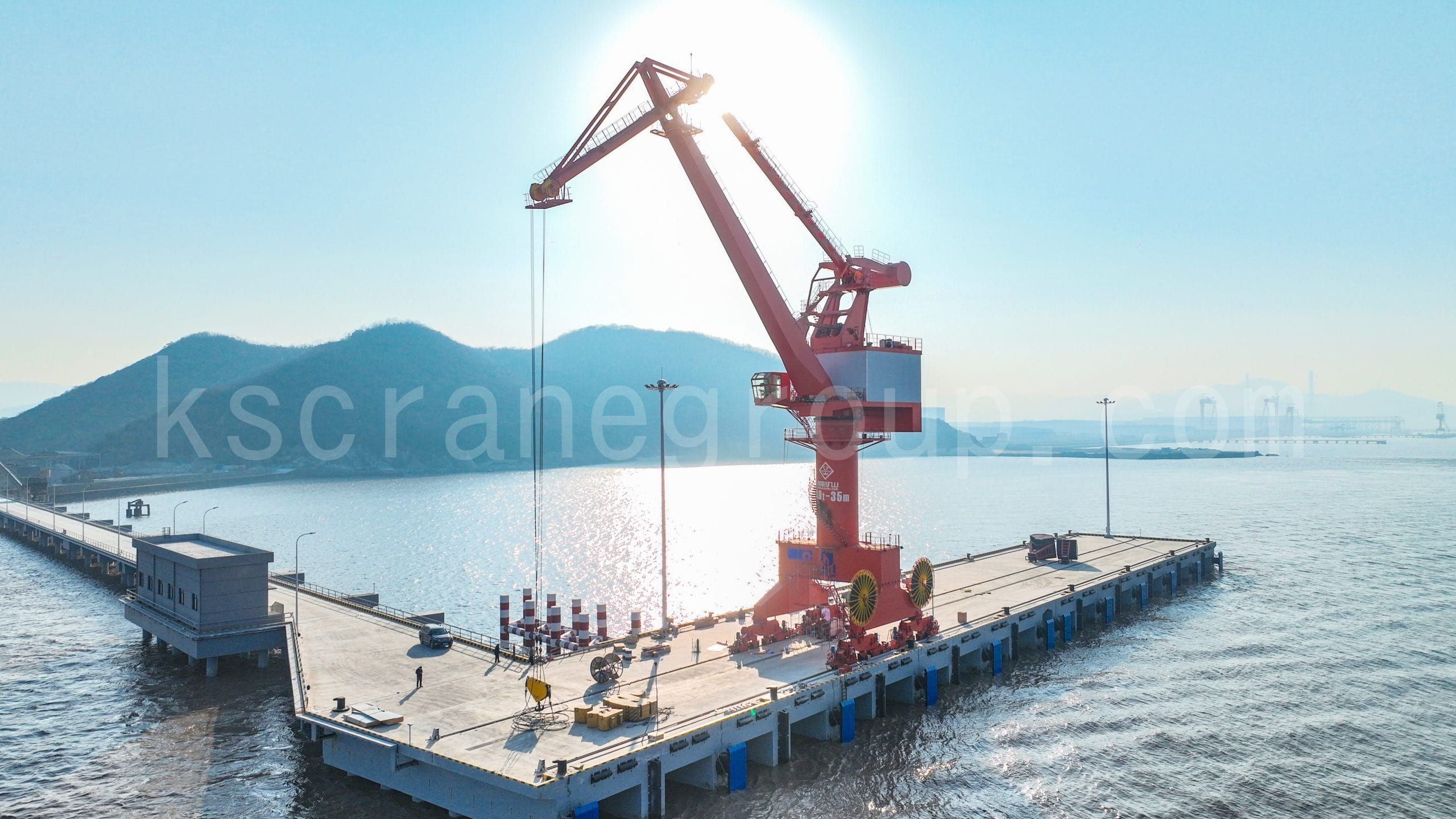
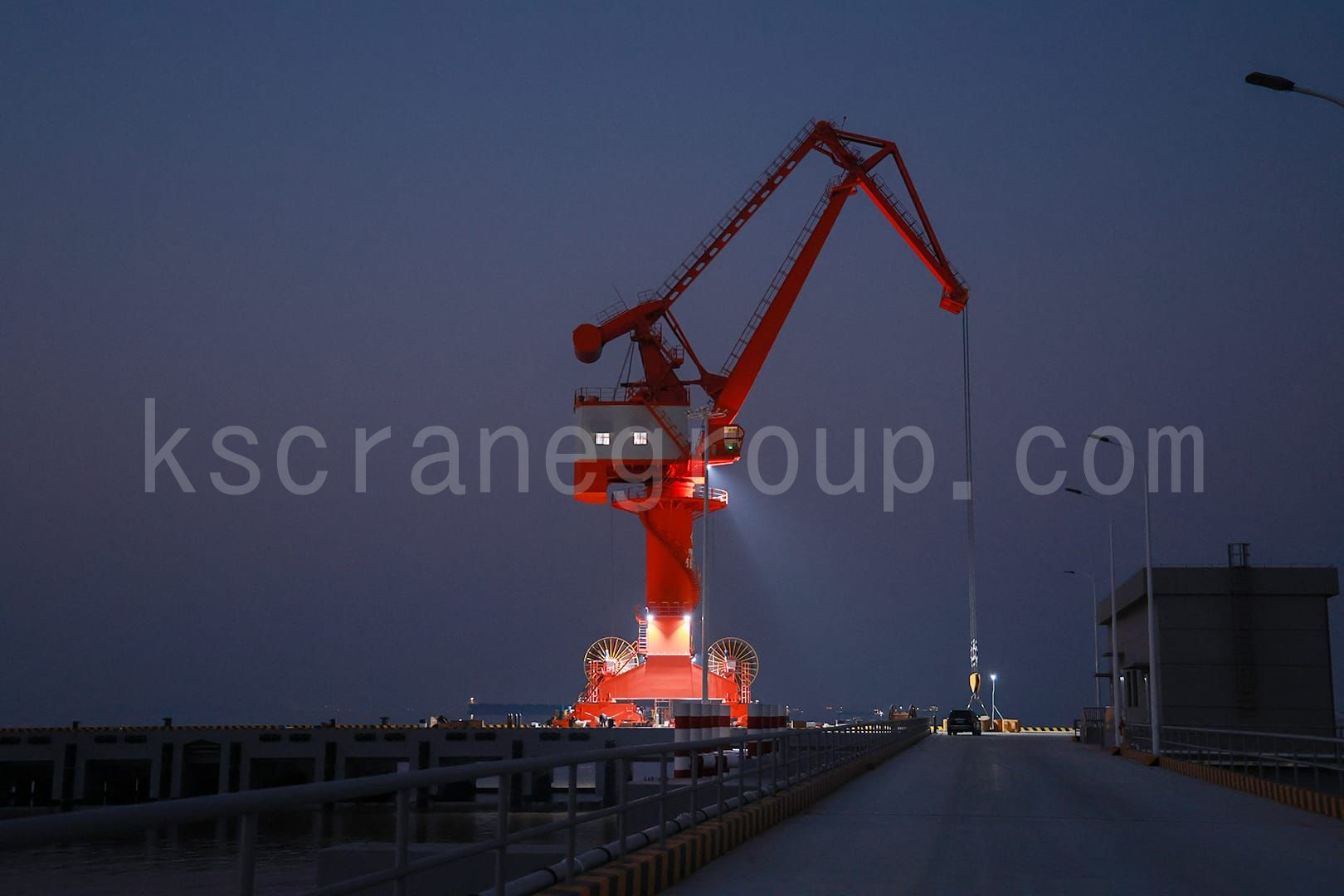
연락하기
- 제품에 대한 무료 및 빠른 견적.
- 제품 카탈로그를 제공하십시오.
- 우리 회사의 지역 크레인 프로젝트.
- 에이전트가 되어 커미션을 받으세요.
- 질문이 있으시면 저희에게 연락하십시오.




































































.png?w=200&h=134)

























